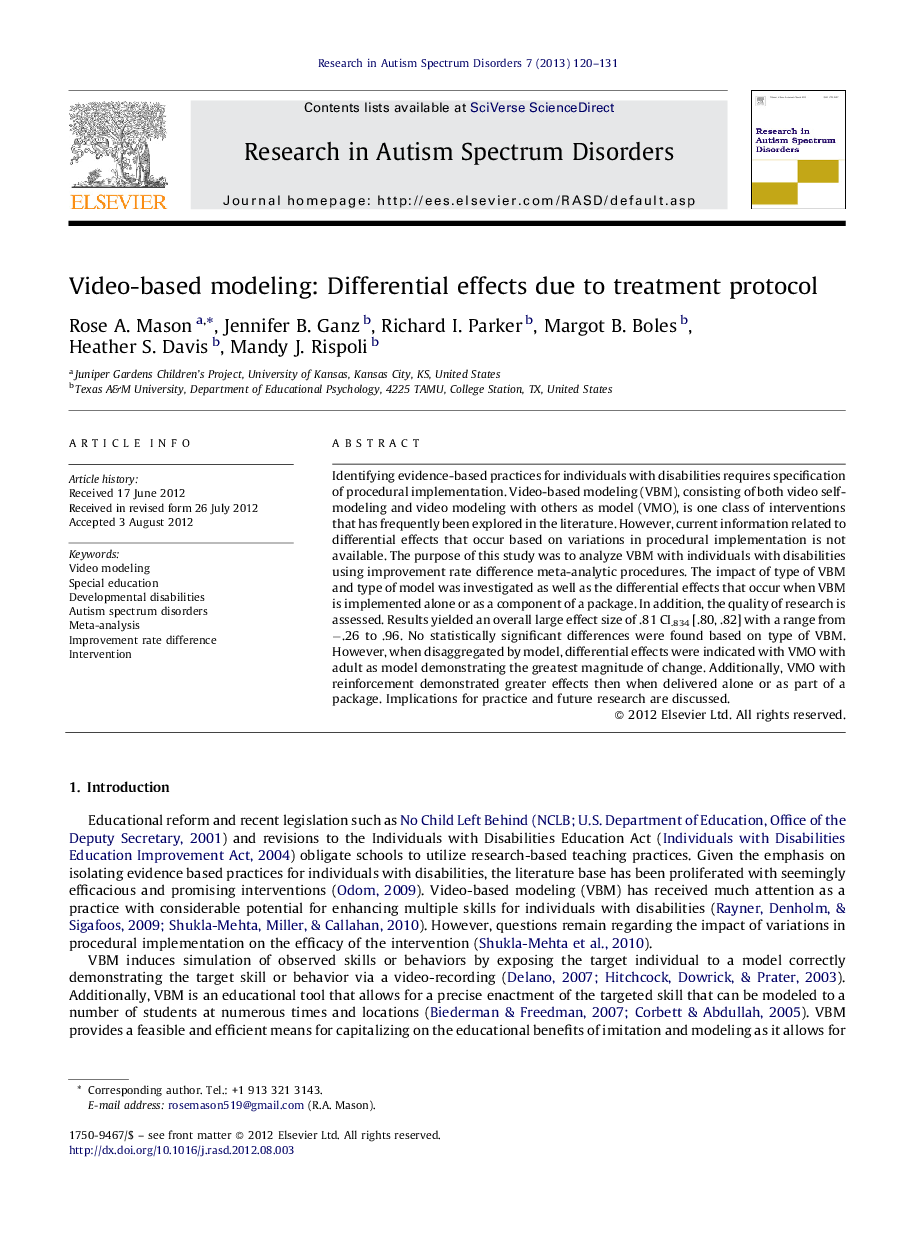| Article ID | Journal | Published Year | Pages | File Type |
|---|---|---|---|---|
| 370585 | Research in Autism Spectrum Disorders | 2013 | 12 Pages |
Identifying evidence-based practices for individuals with disabilities requires specification of procedural implementation. Video-based modeling (VBM), consisting of both video self-modeling and video modeling with others as model (VMO), is one class of interventions that has frequently been explored in the literature. However, current information related to differential effects that occur based on variations in procedural implementation is not available. The purpose of this study was to analyze VBM with individuals with disabilities using improvement rate difference meta-analytic procedures. The impact of type of VBM and type of model was investigated as well as the differential effects that occur when VBM is implemented alone or as a component of a package. In addition, the quality of research is assessed. Results yielded an overall large effect size of .81 CI.834 [.80, .82] with a range from −.26 to .96. No statistically significant differences were found based on type of VBM. However, when disaggregated by model, differential effects were indicated with VMO with adult as model demonstrating the greatest magnitude of change. Additionally, VMO with reinforcement demonstrated greater effects then when delivered alone or as part of a package. Implications for practice and future research are discussed.
► Meta-analysis of video based modeling (VBM) for individuals with disabilities. ► Differential effects do not exist based on the type of VBM implemented. ► The type of model utilized moderates the effect of VBM on targeted outcomes. ► Variations in procedural implementation of VBM appear to influence intervention effect size.
